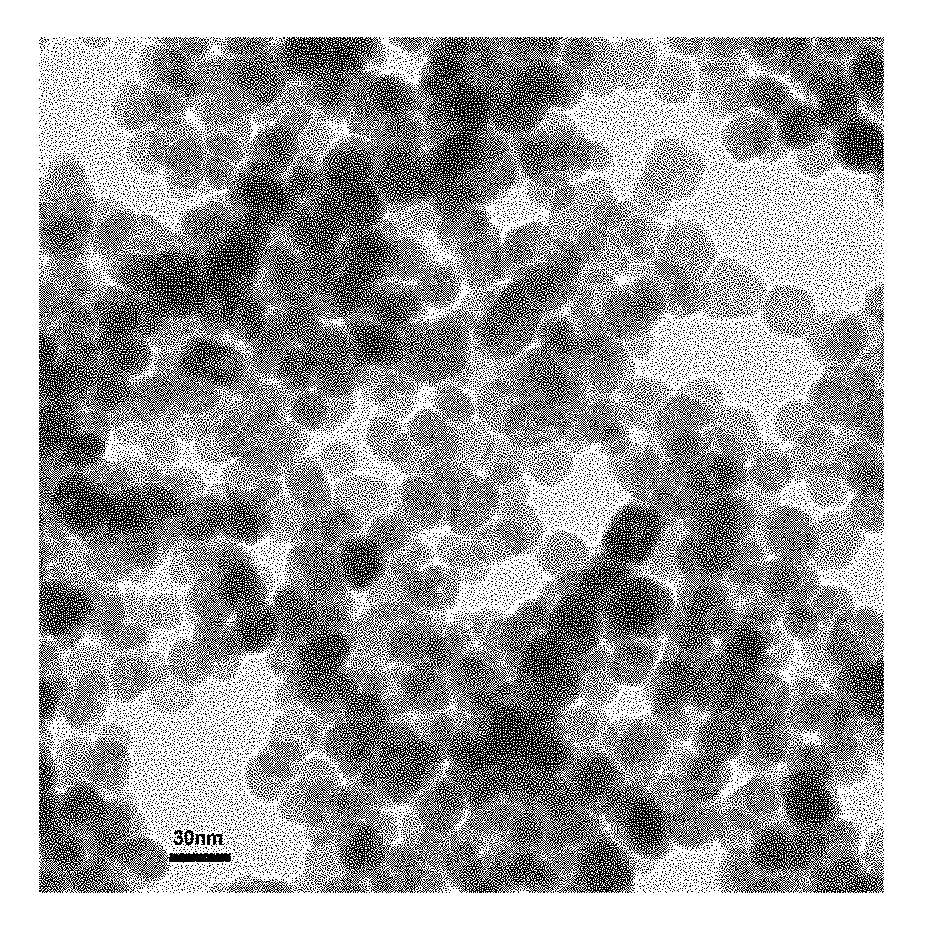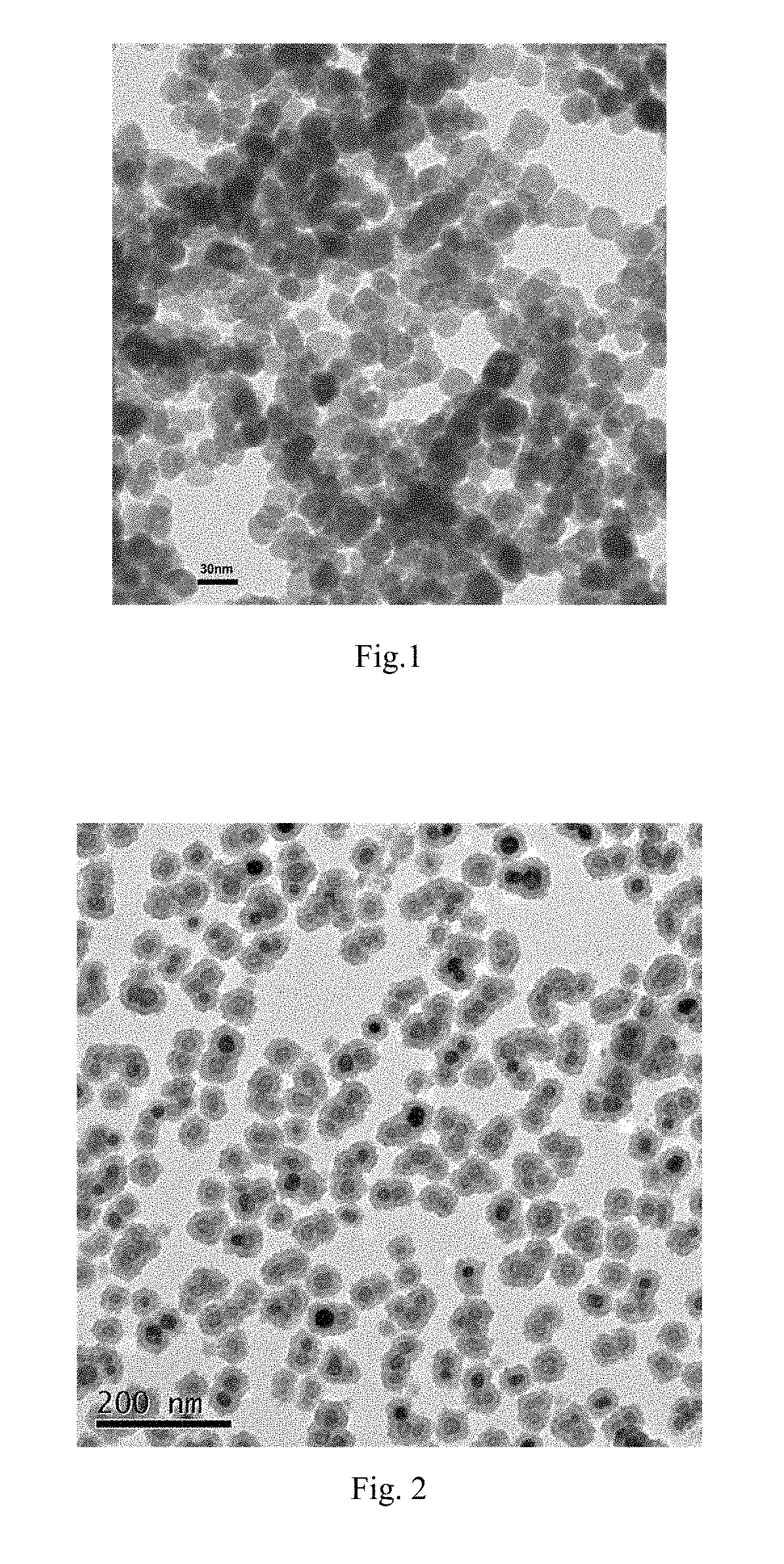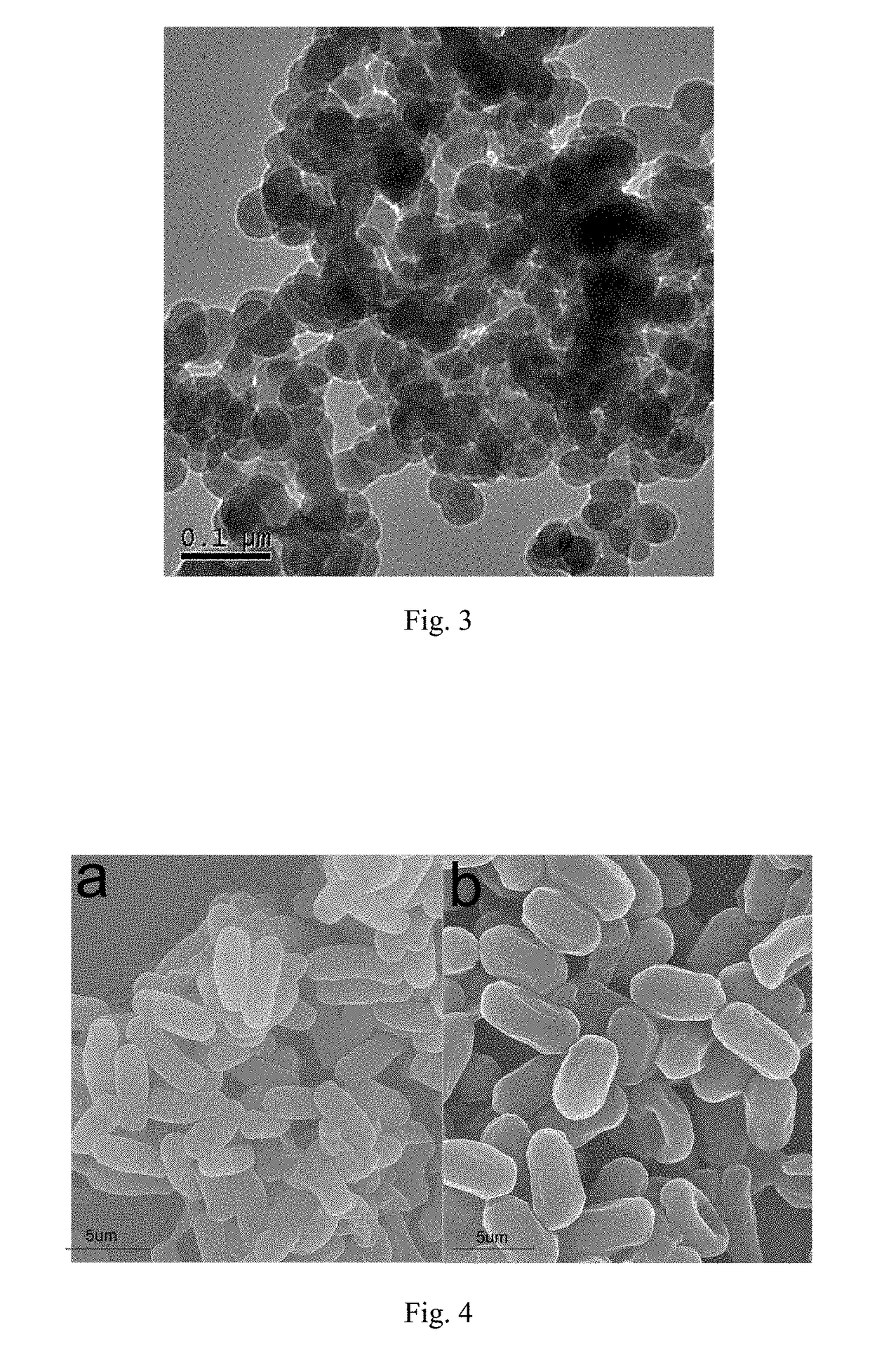Biological composite material loaded with magnetic nanoparticles with core-shell structure, the preparation therefore and the application
a magnetic nanoparticle and composite material technology, applied in the field of functional materials, can solve the problems of oxidative injuries of cell constituents, difficult application of magnetic nanoparticles, and microbial processing pollutants, and achieve the effect of rapid degradation and rapid enrichmen
- Summary
- Abstract
- Description
- Claims
- Application Information
AI Technical Summary
Benefits of technology
Problems solved by technology
Method used
Image
Examples
example 1
on of Fe3O4 Nanoparticles
[0039]In this experiment, all the chemical agents were of analytical grade and were used without further purification. The spherical magnetic particles were prepared according to the literature with some modification.40 As usually, 2.02 g of Fe(NO3)3.9H2O and 4.1 g of sodium acetate were dissolved in 50 mL of ethylene glycol (EG) with stirring for 30 min. The obtained solution was transferred to a Teflon-lined stainless-steel autoclave and heated at 180° C. for 6 h. Then the autoclave was naturally cooled to room temperature. The gained black magnetite particles were washed with ethanol for several times, and dried in vacuum at 60° C. for 5 h.
[0040]FIG. 1 shows the TEM of Fe3O4 nanoparticles. It can be seen, Fe3O4 nanoparticles dispersed and diameter of about 30 nm.
example 2
on of Fe3O4@mSiO2 Nanoparticles
[0041]The core-shell structured Fe3O4@mSiO2 microspheres were prepared through a modified Stöber method. In a typical process, 0.10 g of obtained Fe3O4 particles were treated using 0.1 M HCl solution by ultrasonication for 20 min. Whereafter, the treated Fe3O4 particles were separated via centrifugation, washed with deionized water. At the same time, The Fe3O4 was dispersed in the mixture solution of 80 mL of ethanol, 20 mL of deionized water, and 1.0 mL of concentrated ammonia aqueous solution (28 wt. %). Afterward, 0.3 g of cetyltrimethylammonium bromide (CTAB) was added dropwise to the solution. After this, 0.25 mL TEOS was added dropwise into the solution under vigorous stirring for 6 h. After reaction for 6 h, the product was collected by magnetic separation and tautologically washed with ethanol and deionized water. The above coating process was redone twice. The structure-directing agent (CTAB) was removed with ethanol and deionized water for th...
example 3
on of Fe3O4@mSiO2@MANHE Nanoparticles
[0043]200 mg (Fe3O4@mSiO2) of the nanoparticles obtained for 250 ml flask, the flask to add 150 ml acetonitrile, ultrasound 30 min, then add 3 ml KH550, mechanical agitation for the night.
[0044]The acid chloride derivative of ABCPA (Cl-ABCPA) was prepared by a reaction of ABCPA and PCl5. ABCPA (3.0 g) was dissolved in dichloromethane (25 mL) and cooled to 0° C. PCl5 (24 g) in 25 mL of CH2Cl2 was added into the above solution and stirred overnight. After the reaction, the excess PCl5 was removed by filtration. The clear solution was added into 5-fold of hexane at 0° C., and 4,4-azo-bis(4-cyanopentanoicchloride) was obtained after filtration. Fe3O4mSiO2—NH2 nanoparticles (0.600 g) were added to 80 mL of dry dimethylformamide. After 0.5 h of ultrasonication, Fe3O4@mSiO2—NH2 (0.60 g) was dispersed in a mixture of 80 mL of CH2Cl2 and 2 mL of triethylamine, and Cl-ABCPA (2.5 g) in 25 mL of dry CH2Cl2 was added to the dispersion. After stirring at 0° C....
PUM
| Property | Measurement | Unit |
|---|---|---|
| mole ratio | aaaaa | aaaaa |
| mass ratio | aaaaa | aaaaa |
| mass ratio | aaaaa | aaaaa |
Abstract
Description
Claims
Application Information
 Login to View More
Login to View More - R&D
- Intellectual Property
- Life Sciences
- Materials
- Tech Scout
- Unparalleled Data Quality
- Higher Quality Content
- 60% Fewer Hallucinations
Browse by: Latest US Patents, China's latest patents, Technical Efficacy Thesaurus, Application Domain, Technology Topic, Popular Technical Reports.
© 2025 PatSnap. All rights reserved.Legal|Privacy policy|Modern Slavery Act Transparency Statement|Sitemap|About US| Contact US: help@patsnap.com



